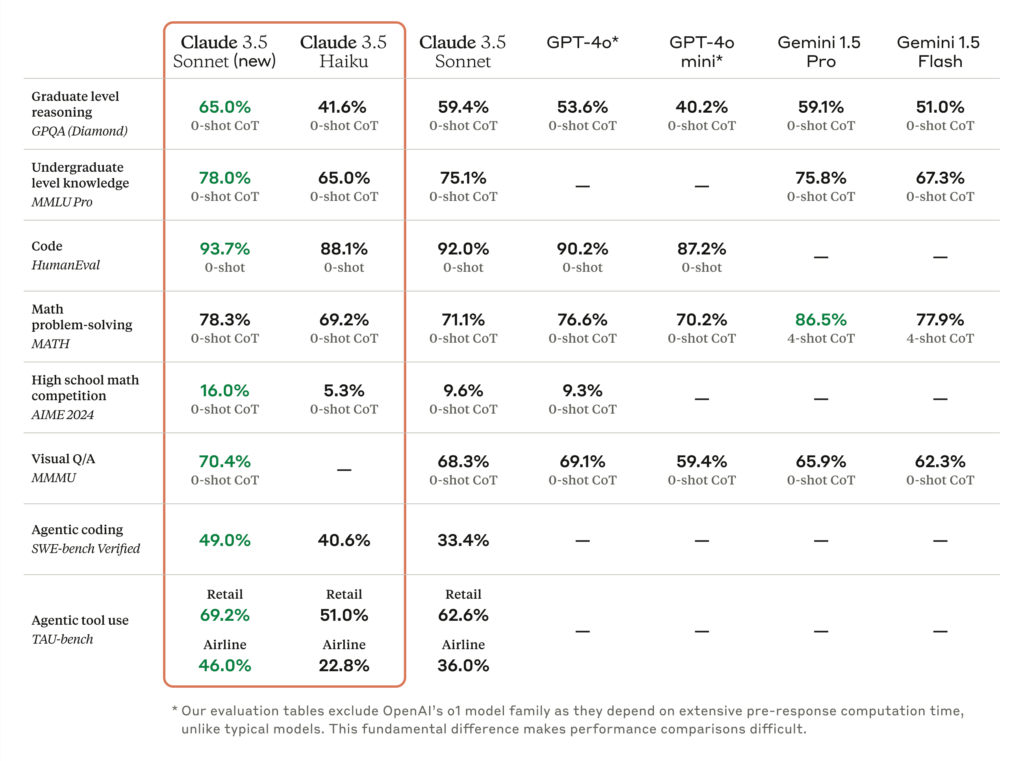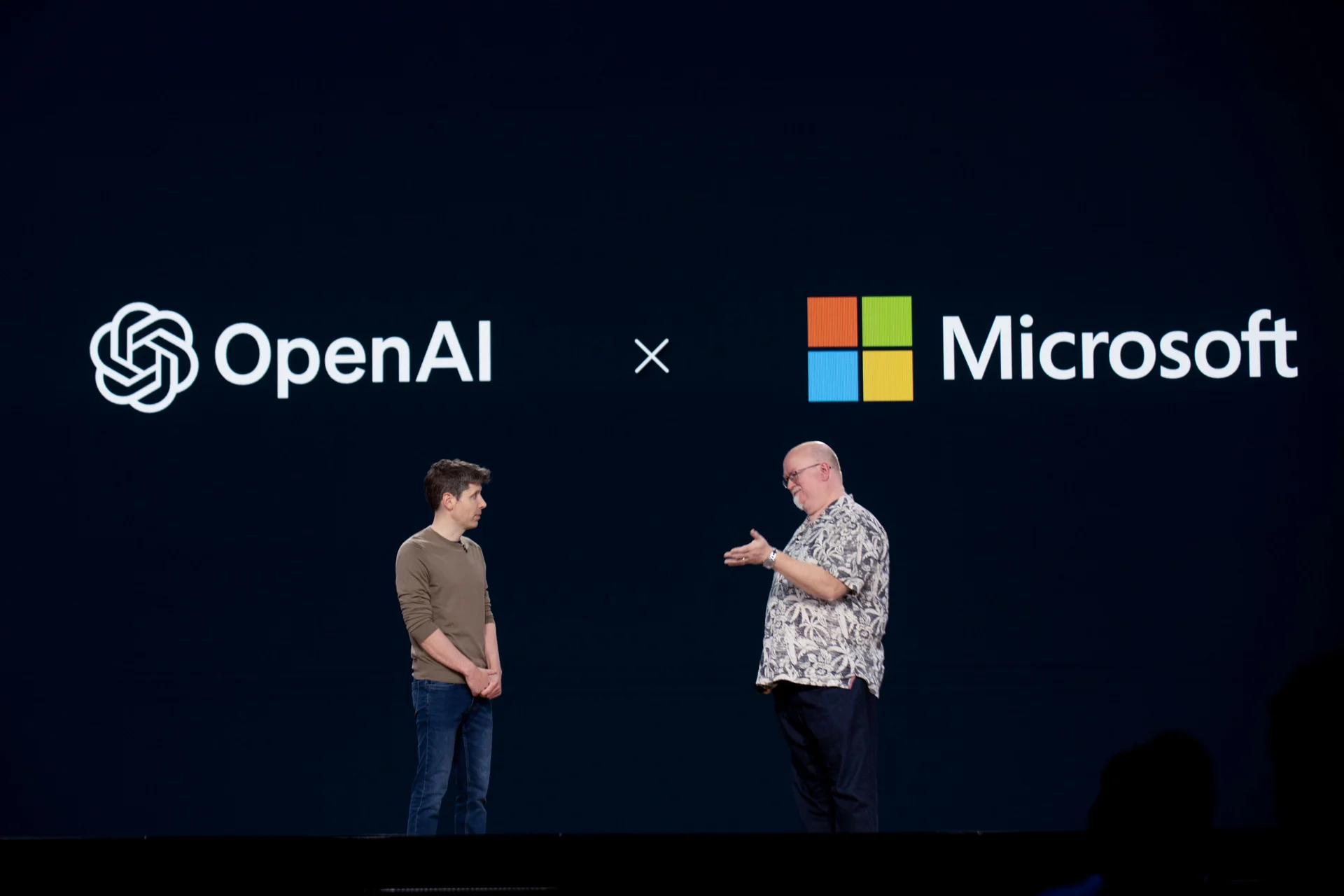In a bold step forward in AI innovation, Anthropic has announced significant updates to its Claude 3.5 models, introducing two refined versions: Claude 3.5 Sonnet and Claude 3.5 Haiku. Additionally, they launched a groundbreaking feature: computer use, now available in public beta. This new development offers AI the ability to interact with computer interfaces as humans do—by viewing screens, navigating cursors, typing, and clicking buttons.
Claude 3.5 Sonnet: Leading the Charge in Software Engineering
The upgraded Claude 3.5 Sonnet is set to revolutionize coding and tool use, with impressive improvements in both performance and cost-effectiveness. In particular, it stands out for its advancements in agentic coding and software tool use tasks, with strong results in industry benchmarks such as SWE-bench Verified and TAU-bench.
Performance Highlights:
- Coding proficiency has surged, with the model scoring 49.0% on SWE-bench, outperforming competitors like OpenAI’s o1-preview model. This is a leap from its predecessor’s 33.4% score.
- On TAU-bench, which evaluates tool use in various domains, Claude 3.5 Sonnet achieved 69.2% in retail and 46.0% in the more challenging airline domain, marking it as a versatile tool for complex real-world tasks.
Early adopters like GitLab and Cognition have already experienced tangible gains in using Claude 3.5 Sonnet for tasks such as DevSecOps, autonomous AI evaluations, and web-based workflow automation. The Browser Company praised its ability to outperform other models tested in similar roles.
This model has been jointly pre-deployment tested by US AI Safety Institute and UK AI Safety Institute, ensuring compliance with stringent safety standards, particularly Anthropic’s own Responsible Scaling Policy.

Claude 3.5 Haiku: The Power of Speed and Affordability
Anthropic’s Claude 3.5 Haiku combines state-of-the-art performance with unmatched speed and affordability. Notably, it exceeds the capabilities of its predecessor, Claude 3 Opus, and boasts enhanced instruction-following and more accurate tool use. With a strong performance on coding tasks—scoring 40.6% on SWE-bench—it offers significant value for companies needing rapid, reliable AI for personalized data processing and sub-agent tasks.
With low latency and affordable scalability, Claude 3.5 Haiku is expected to become the go-to choice for businesses looking for high-performance AI models to power user-facing products. It will be released later this month on Amazon Bedrock and Google Cloud’s Vertex AI, with support for both text and image inputs.
The Dawn of Computer Use: An AI Model Navigating the Digital World
Anthropic’s computer use capability opens a new frontier for AI, allowing Claude to interact with digital environments as humans do. By leveraging standard computer tools and software programs, developers can now automate complex, multi-step tasks. Replit, for example, is utilizing this technology to develop key features for its Replit Agent product, enhancing app evaluation during the build process.
This new feature works through an API that enables Claude to translate human instructions into actionable computer commands. For instance, the model could browse web pages, fill out forms, or manipulate spreadsheets, executing commands just as a human would. Early testing on OSWorld (which evaluates AI’s computer use abilities) saw Claude 3.5 Sonnet score 14.9% in a screenshot-only category, significantly higher than the next best AI model.
However, as with any emerging technology, this capability is still evolving. Some seemingly simple tasks—like scrolling or zooming—remain challenging for Claude, and developers are encouraged to start with low-risk applications. Anthropic has implemented safety measures, including classifiers to monitor and prevent potential misuse of the technology for malicious purposes, such as spam or fraud.
A Vision for the Future: Responsible Scaling and Safety
Anthropic has long championed the responsible scaling of AI technology. The release of Claude’s computer use feature and the new models is a testament to this vision. By gathering feedback from early adopters and developers, they plan to refine these technologies, ensuring that AI remains a force for good.
The team has also taken proactive steps to mitigate the risks associated with increasingly capable AI systems. The Responsible Scaling Policy remains central to these efforts, supported by rigorous testing and ongoing collaboration with safety institutes.
Conclusion: A New Era of AI Usability
The launch of Claude 3.5 Sonnet, Claude 3.5 Haiku, and the computer use capability marks a significant milestone in the AI landscape. As companies like Asana, Canva, DoorDash, and Cognition begin to explore the vast potential of these models, we are on the cusp of a new era where AI models can seamlessly navigate and manipulate digital environments.
These innovations not only push the boundaries of what AI can achieve but also pave the way for a future where humans and AI can work together in unprecedented ways. As Anthropic continues to innovate, the broader implications for industries such as software development, research, and customer service are profound. These models hold the potential to transform workflows, enhance productivity, and drive creativity across countless domains.
The upgraded Claude models are now available via Anthropic’s API, Amazon Bedrock, and Google Cloud Vertex AI, with more functionalities set to follow in the coming months. The public beta of computer use is open to developers, and further updates are expected soon. Anthropic invites users to experiment with these tools and provide valuable feedback to shape the future of AI technology.
Read More : https://www.anthropic.com/news/3-5-models-and-computer-use









